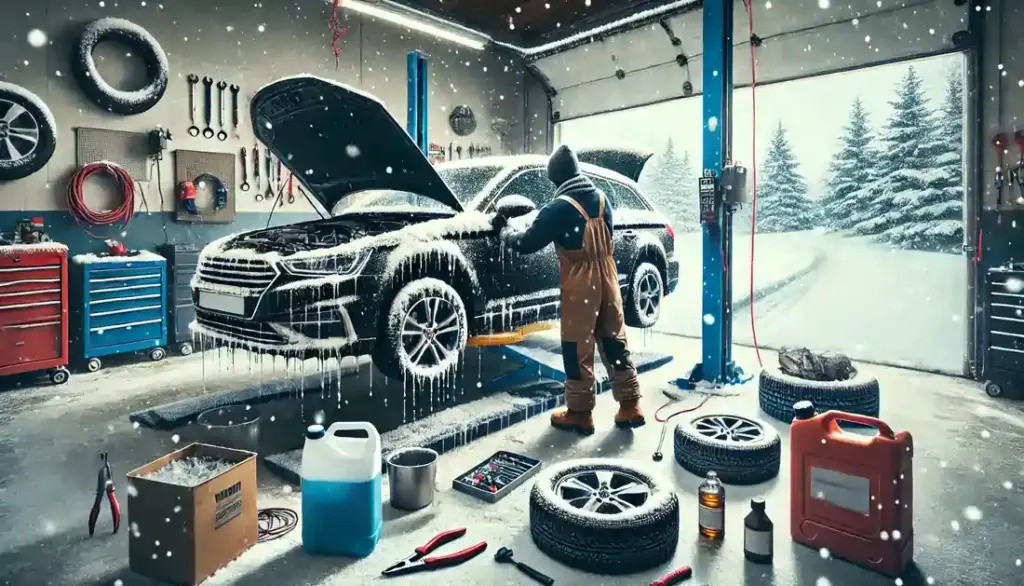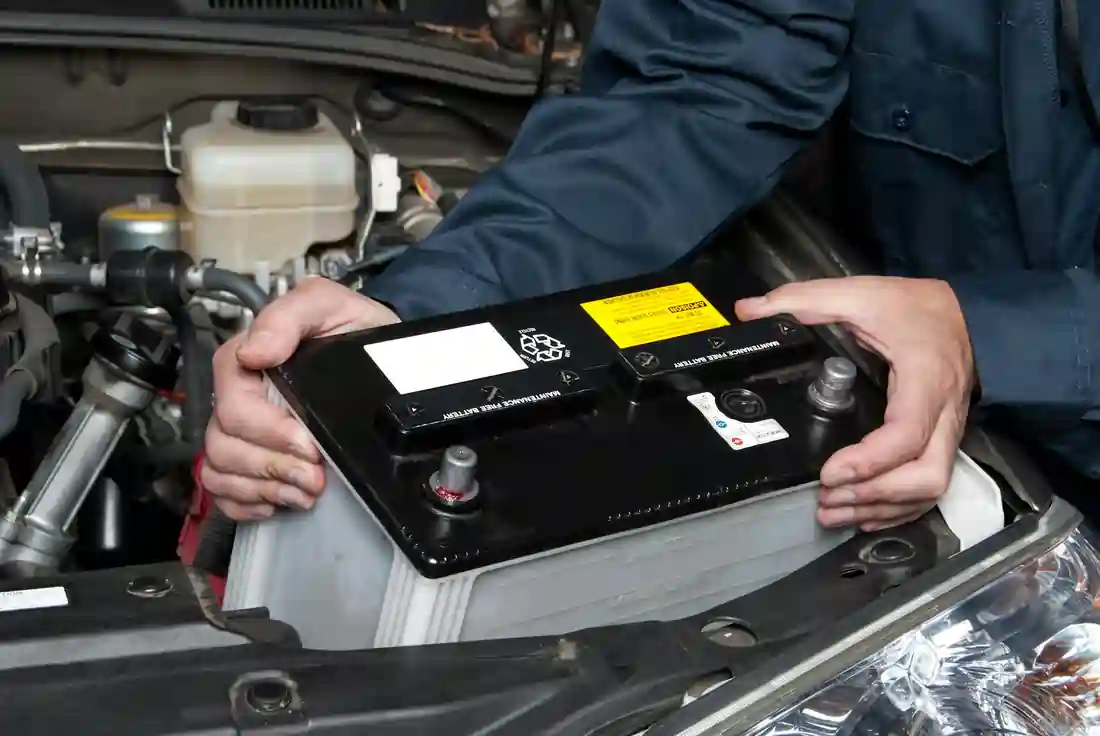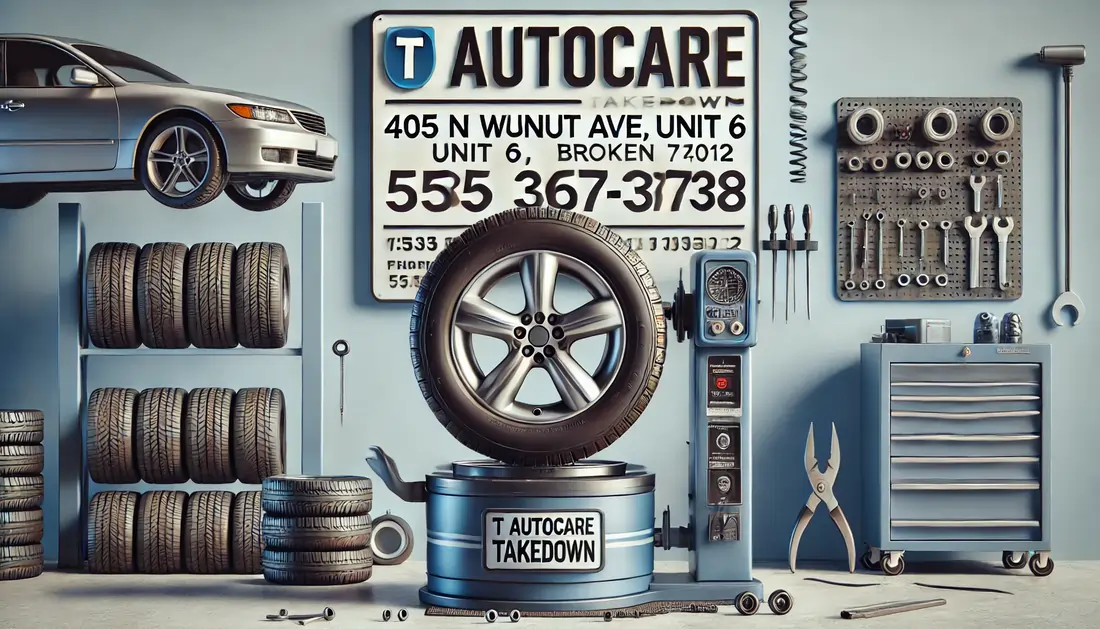Winterizing your vehicle is essential to ensure it remains safe and reliable during the cold months. Cold weather can take a toll on various car components, so preparing ahead of time helps avoid costly repairs and keeps you safe on the road. From tires to fluids, here’s a comprehensive guide to help you winterize your vehicle and prevent any surprises this season.

Check Your Antifreeze and Fluids
One of the most important steps in winterizing your car is ensuring the correct antifreeze-to-water mixture in your cooling system. The recommended ratio is typically 50/50, but always check your owner’s manual for specific guidelines. Using the right mixture helps prevent your engine from freezing in cold temperatures, which could lead to costly engine repairs. This simple step also helps maintain optimal engine performance all winter long.
While checking your fluids, you may also want to consider a coolant flush and refill to ensure your cooling system is clean and functioning properly.
Switch to Winter-Grade Oil
If you live in areas where temperatures drop well below freezing, it’s a good idea to switch to a thinner oil during the winter months. Thinner oil flows more easily in cold weather, reducing engine strain and ensuring proper lubrication, even during those freezing starts. Check your owner’s manual or speak with your mechanic about using a low-viscosity oil suitable for cold weather. An oil change before the winter season can help your engine run smoothly all season.
Use Freeze-Resistant Wiper Fluid
Visibility is crucial during the winter months, especially when dealing with snow and ice. Make sure to use freeze-resistant windshield wiper fluid to prevent your windshield from icing over. Regular wiper fluid can freeze on contact, obstructing your view, which can be dangerous. Along with the proper fluid, consider installing winter wiper blades for better performance in tough weather conditions.
Check and Maintain Tire Pressure
Cold weather can cause your tire pressure to drop, which affects your vehicle’s traction and handling.

Make it a habit to check your tire pressure regularly and maintain the recommended PSI as outlined in your vehicle’s maintenance schedule. Properly inflated tires provide better grip on icy and snowy roads, reducing the risk of skidding. Low tire pressure can also lead to uneven tire wear, affecting the lifespan of your tires.
If you’re unsure how to check your tire pressure, you can follow this guide on how to check your car’s tire pressure to ensure you’re maintaining the correct levels.
Inspect Tread Depth and Consider Winter Tires
In addition to tire pressure, the tread depth of your tires plays a vital role in maintaining traction during winter. Ensure your tires have sufficient tread depth to improve grip, especially on slick or snowy surfaces. You can measure your tire’s tread depth using simple tools like a penny or a tread depth gauge. If your tires are worn out, it’s time to consider replacement.
For those who live in areas with heavy snow, winter tires are highly recommended. These tires provide superior grip and improve vehicle stability by reducing the risk of slipping on icy roads. They are designed specifically for low-temperature conditions and can greatly enhance your car’s performance in winter weather.
Schedule Tire Inspection and Replacement
Regular tire inspections ensure your tires are ready to handle the winter season. If you’re unsure about the condition of your tires, it’s a good idea to visit your trusted auto repair shop for a professional inspection. For more information on tire services and tire replacement, be sure to schedule an appointment before the harsh weather sets in.
Inspect and Maintain Your Car Battery
Cold weather can significantly reduce your battery’s capacity, making it harder for your vehicle to start. It’s essential to inspect your battery for signs of wear, including cracks, leaks, and corrosion around the terminals. Clean any corrosion you find with a mixture of baking soda and water, and ensure the connections are tight to prevent future issues.

Consider having your battery professionally tested, especially if it’s over four years old. If necessary, it might be time for a battery replacement. Reliable battery performance is crucial in cold weather, as a weak battery can leave you stranded when you need your car the most.
Always keep jumper cables or a portable jump starter in your car. These essential tools can save you from being stuck if your battery fails, allowing you to quickly get back on the road.
Battery checks should be part of your regular car maintenance routine. Make sure to schedule a battery inspection to ensure your vehicle is ready for the winter months.
Keep Your Car Winter-Ready While Saving Money
Proper car maintenance doesn’t have to break the bank, even when preparing for winter. By scheduling regular inspections and addressing issues like battery wear or low tire pressure early, you can prevent more expensive repairs down the road. It’s also important to plan ahead and set aside funds specifically for winterizing your car. For more tips on how to save while maintaining your vehicle, check out this helpful guide on managing your car maintenance budget.
Inspect Belts and Hoses for Wear
Cold weather can make your vehicle’s belts and hoses more prone to becoming brittle and damaged. It’s essential to inspect these parts regularly for signs of wear, such as cracks, fraying, or glazing. Pay special attention to the serpentine belt and radiator hoses, as they are critical for engine operation. Any damaged belts or hoses should be replaced immediately to avoid more serious issues.
By replacing worn belts and hoses before they fail, you can prevent unexpected breakdowns and keep your car running smoothly throughout the winter. This simple preventive measure also helps you avoid more costly repairs down the road.
For peace of mind, it’s a good idea to visit your auto shop for a thorough inspection of your belts and hoses before the cold weather sets in.
Pack a Winter Emergency Kit
Being prepared for roadside emergencies is crucial, especially during the winter months.

Pack an emergency kit that includes essential items like a flashlight, blanket, gloves, ice scraper, small shovel, and a bag of sand or kitty litter for traction. These items can be lifesavers if you get stuck in snow or experience a breakdown.
A well-equipped car emergency kit ensures you’re prepared to stay safe and warm while waiting for assistance. Additionally, it’s a good idea to include non-perishable snacks, bottled water, and a first-aid kit for added security during winter travels.
Keeping an emergency kit is part of smart auto maintenance, and it gives you peace of mind when hitting the road in adverse weather conditions.
Check and Upgrade Your Vehicle’s Lighting
In winter, it’s important to make sure your headlights are working well. Replace any dim or burned-out bulbs, and clean the lenses to get the best visibility. With shorter days and poor weather, good lighting is key to safe driving. You may want to consider ways to improve night driving visibility by upgrading to brighter halogen or LED bulbs for better night vision.
Don’t forget to check your brake lights and turn signals. These lights make it easier for other drivers to see you, which can help prevent accidents. Part of your car maintenance routine should include making sure your lights and battery are in good condition, especially during winter.
Schedule a Pre-Winter Check-Up
Before winter hits, it’s a good idea to schedule a pre-winter check-up with your mechanic. This will ensure all parts of your vehicle, including the brakes, exhaust system, and heating, are in good condition. Regular auto service and maintenance help prevent potential issues and keep your vehicle running smoothly.
Your mechanic can identify and fix any problems that might worsen in cold weather, ensuring your car stays reliable and safe throughout the season. It’s also important to have your heating system inspected to ensure a warm and comfortable interior during those chilly months.
Regular visits to the garage can make a big difference in keeping your vehicle in excellent shape for winter and beyond.
By following these steps, you’ll help ensure your vehicle is ready to tackle the challenges of winter driving. Regular auto maintenance and being prepared can prevent breakdowns and keep you safe on the road.
Winterizing your vehicle not only protects it from the harsh elements but also enhances your safety and driving comfort. For professional assistance and comprehensive vehicle repair and maintenance services, visit T Autocare Takedown, your trusted auto repair shop in Broken Arrow.
Stay safe and enjoy a worry-free winter driving experience.
T Autocare Takedown
1501 W Detroit St
Broken Arrow, OK 74012
(539) 367-3738
Useful Links on Winterizing Your Car
When preparing your vehicle for the winter season, it’s helpful to have access to the right resources. Here are some useful links to guide you through the winterizing process:
- How to Winterize Your Vehicle: A comprehensive guide to get your car ready for the cold months.
- How to Maintain Your Car’s Cooling System: Ensure your engine stays cool and runs efficiently, even in cold weather.
- Essential Items for Your Car’s Emergency Kit: Prepare for roadside emergencies with this must-have list of items.
- The Importance of Regular Fluid Checks: Learn why checking your car’s fluids is crucial for winter performance.
Here are the summaries for the external links:
- Family Handyman
Family Handyman is a trusted resource for DIY enthusiasts, providing practical tips and how-to guides for home improvement, car maintenance, and more. Their extensive library of content helps readers tackle a variety of projects, including vehicle care and seasonal maintenance tasks, with step-by-step instructions and expert advice. - DMV Winterizing Your Car Guide
The DMV’s Winterizing Your Car Guide offers valuable information on preparing your vehicle for the winter season. The guide covers essential tasks such as checking your tires, fluids, and battery, along with tips on how to stay safe on icy roads. It’s a useful resource for any car owner looking to keep their vehicle in top condition during colder months. - AutoZone Winter Preparation Guide
AutoZone’s Winter Preparation Guide provides a comprehensive overview of how to get your car ready for winter. This guide includes tips on maintaining your battery, fluids, and tires, as well as advice on what tools and products to keep in your car for emergencies. It’s a helpful resource for DIY car care enthusiasts.












